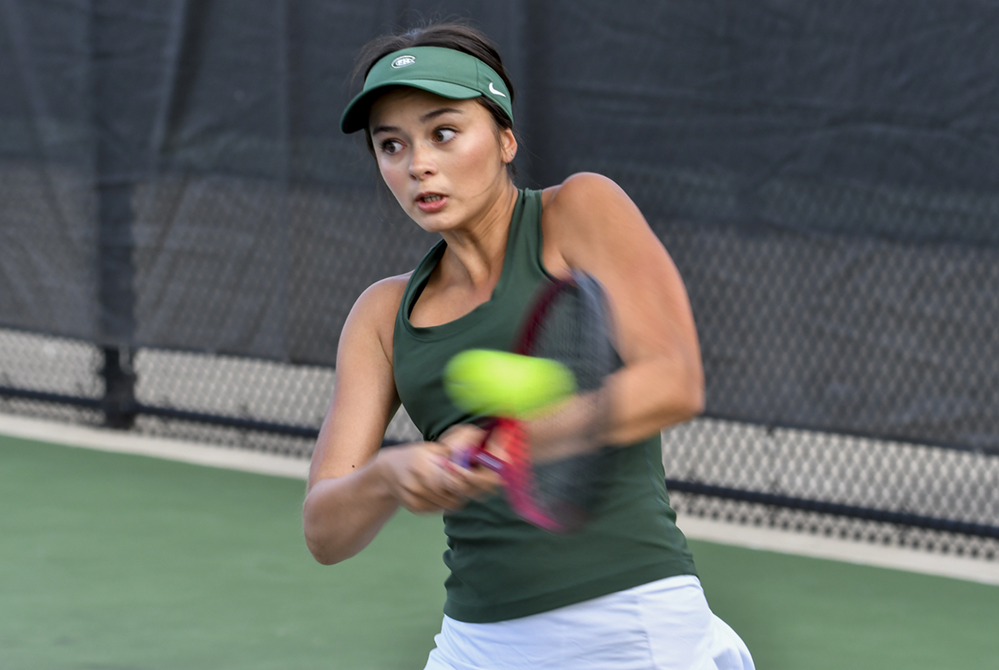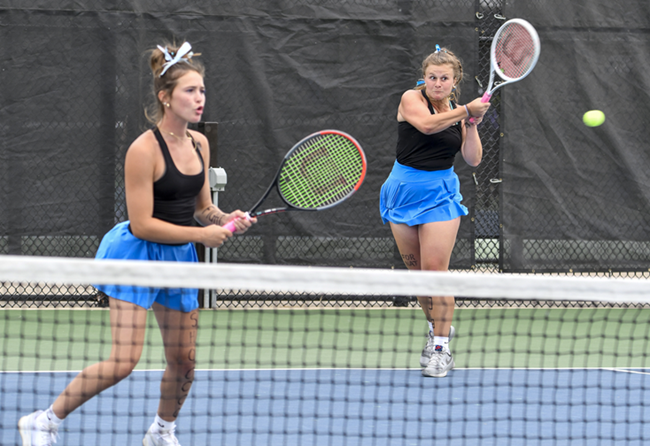
Keep on Coaching
February 1, 2013
By Geoff Kimmerly
Second Half editor
A few weeks ago, I finally got my first chance this season to watch a friend coach his basketball team. After guiding some others at the lower levels, this is his first time running the varsity – something he wasn't sure he wanted to do with a 1-year-old just learning to walk, but a challenge he ended up taking on to the benefit of all those involved.
Simply put, he’s good. I've seen a lot of teams and a lot of coaches over the past 15 years, and although I wouldn't know much of what to do if I were walking the sideline, I felt pretty qualified in telling him I was impressed – even if he didn't buy that I was offering an unbiased opinion. The best news is he’s gone from not sure about this a few months ago to talking about next season.
We know, at least anecdotally, that coaching continues to get more challenging. The time commitment has grown substantially to make running a program a year-round endeavor in a lot of sports at a lot of schools.
That commitment – especially for coaches with children of their own – was a main reason referred to in a New Haven Post-Chronicle story Saturday that noted 23 football coaching openings in Connecticut at one point this offseason. That state has 146 football teams – meaning roughly 15 percent will have new leaders this fall.
And that got me thinking about my friend, about how glad I am he’s given this a shot, and how I've seen so many others either not do so, or not stick around long despite having some pretty nice success.
A study published last winter in Interscholastic Athletic Administration magazine – a product of the National Interscholastic Athletic Administrators Association – noted some predictable results of a study that sought to determine the biggest challenges faced by first-year high school coaches.
The toughest according to the study was balancing the demands of coaching and teaching, experienced by nearly half the respondents – 98 percent of which coached high school teams and 81 percent of which are teachers.
The next six reasons all were noted by at least 30 percent of those in the study – personal fatigue, securing community support, securing and caring for facilities and equipment, parental contact, keeping non-starting players motivated, dealing with schedule interruptions and motivating athletes to achieve consistent, peak performance.
Nothing there is earth-shaking, and most if not all of these challenges are faced by high school coaches regardless of how long they've been in the field. But I got a little more perspective from some of the 32 items that ranked as least challenging to the first-year leaders – keeping in compliance with state and league regulations, dealing with substance abuse issues, teaching sport skills and creating a positive team atmosphere – things that seem most important, and yet appear to be easiest to do. I’m not sure what that tells us – but I think it tells us something.
Click to check out the entire three-page breakdown of the study, plus the researchers’ recommendations to remedy some of what first-year coaches face.
Giving back to Saginaw
I love reading about high-level athletes – like a star-studded group of alums from Saginaw – giving back to where they got their starts.
Pittsburgh Steelers star LaMarr Woodley made a big impact before the start of this school year by donating $60,000 to cover all participation fees for athletes in his former school district. The Saginaw News’ Hugh Bernreuter writes today about how Woodley (Saginaw High), the Philadelphia 76ers’ Jason Richardson (Saginaw Arthur Hill) and former Oakland Raiders standout Stu Schweigert (Saginaw Heritage) have combined to give more than $865,000 back to their home communities.
Bernreuter also mentions the non-monetary contributions of the Golden State Warriors’ Draymond Green (Saginaw High) and former Indianapolis Colts receiver Blair White (Saginaw Nouvel).
Click to read more about it.
Quote(s) of the Week
While rifling through more papers on my desk, I found an article from the Washington Post from Sept. 2011 titled “How high school sports save our schools.” I was drawn to it in part because I spent more than a decade in a newsroom, and it was a piece by a reporter covering education who instead of reporting on school boards and the like, delved into the importance of interscholastic athletics to education as a whole.
He spoke of how participation continues to grow even as resources dwindle, and of data supporting that extracurriculars like sports are more effective than academic classes in teaching leadership, teamwork, time management and “other skills crucial for success in the workplace.” Later, he mentioned a study noting that those who participate in extracurriculars earned more a decade later.
Click here to read the entre piece. These passages struck me most.
“Coaches might be the only faculty members still allowed by our culture and educational practice to get tough with students not making the proper effort. They have the advantage of teaching what are essentially elective non-credit courses. They can insist on standards of behavior that classroom teachers often cannot enforce because the stakes of dismissing or letting students drop their courses are too high. …
“Students do better in activities they choose. If we provide more of them, led by committed adults … that can make a difference. We know the bad news about education. Dropout rates are high. Achievement scores are stagnant. But sports participation is going up, despite pressure to cut it back. Let’s cheer about that and look for a way to draw in more students.”

Forest Hills Rules D2: FHC's Ohlman Repeats, FHN Takes Back Team Title
By
Keith Dunlap
Special for MHSAA.com
June 1, 2024
BYRON CENTER — The last day of actual school this year for Grand Rapids Forest Hills Central senior Lily Ohlman might have been May 6. But from a tennis perspective, it can be argued that her last day of school was May 4 — when she learned a few things that paid off during her final high school tournament.
It was then that Ohlman suffered a three-set loss to Megan Sullivan of Farmington Hills Mercy (10-8 in the third-set tiebreak). Earning a rematch with Sullivan in the No. 1 singles championship match at the MHSAA Lower Peninsula Division 2 Finals on Saturday, Ohlman tried to figuratively go to school and do her homework from that last match with Sullivan.
“Megan has an extremely good forehand,” Ohlman said. “She really hurt me with that in the last match. Going into this, I just tried as hard as I could not to hit it to her forehand. When I did, I tried to hit it deep and stuff.”
Ohlman certainly played like someone who did her homework from that match as well, as she earned her second straight singles title with a 6-3, 6-3 victory over the junior from Mercy.
Ohlman reached Sullivan by surviving Ana Cheng of Mattawan in the semifinals, 6-2, 4-6, 6-3.
“I have thought about this every day for the past year since I won states for the first time,” Ohlman said of trying to repeat. “It’s been like a true dream come true for my tennis career.”
While Ohlman brought home an individual title for Forest Hills Central, rival Forest Hills Northern claimed the team championship for the third time over the last four years. The Huskies netted 29 points to edge 2023 champion Birmingham Seaholm, which finished with 23.
 Northern had players in five flights advance to finals, with four of those flights producing championships.
Northern had players in five flights advance to finals, with four of those flights producing championships.
FHN’s title was punctuated when the No. 1 doubles team of Ryan Morey and Paige McKenzie defeated Seaholm’s team of Jenna Ting and Katie Slazinski in a thrilling final, 6-3, 5-7, 6-4. Northern actually had the team title clinched by that point, but head coach Steven Olson didn’t want his players to know that.
“I don’t want them to back off because they think the team has already won it,” he said. “I want them to think they are still hunting for a title the entire time.”
Huskies junior Andrea Wang defeated Keira Kirkland of Farmington Hills Mercy, 5-7, 7-6 (2), 6-2 to win at No. 2 singles, sophomore Harriet Ogilvie captured the title at No. 3, and the team of Lauren Jaklitsch and Morgan McKenzie won at No. 2 doubles.
Olson guided his team to a Finals title in his second year as head coach after taking over for Dave Sukup, who led the program for 49 years before retiring. Northern had fallen to No. 2 behind Seaholm in the final regular-season coaches rankings. And then the Huskies lost their No. 1 singles player Nathalie Lanne to a torn ACL last week.
Her replacement, Natalia Acevedo, managed to win a first-round match to earn a crucial point despite not being seeded.
Also stepping up was sophomore Aanya Dogra, who entered the tournament unseeded at No. 4 singles. Dogra recorded upsets of No. 3 seed Elisa Costeux of Mattawan and No. 2 seed Maddy Youngblood of Grosse Pointe South before falling in the championship match to No. 1 seed Gabby Owens of Farmington Hills Mercy, 6-0, 6-2.
Still, Dogra’s run earned some major points for the Huskies.
“The rest of the team just stepped up and performed,” Olson said. “It’s been a wild weekend, but I’m very proud of these girls.”
PHOTOS (Top) Forest Hills Central’s Lily Ohlman returns a volley during her No. 1 singles championship match Saturday. (Middle) Forest Hills Northern’s Paige McKenzie, right, with partner Ryan Morey, sends back a powerful volley at No. 1 doubles. (Click for more from High School Sports Scene.)

